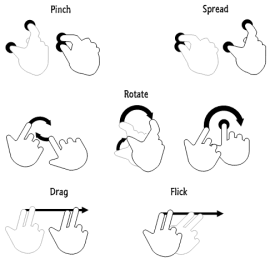Oracle suit overwhelms Ubuntu launch


We had a good excuse, however. Ubuntu 10.10 will support multitouch, the technology at the heart of another lawsuit, the one Apple filed against HTC over its inclusion in Android. Software patents are not legal in Europe, where Ubuntu developer Canonical is based.
Shuttleworth may argue now that Ubuntu's implementation will be far more sophisticated than what Apple uses on the iPhone, a touch language that could resemble computing commands in their complexity.
Apple may claim a patent on its mousetrap, but can it claim to control all methods for catching mice?
On the Canonical blog all this is referenced as uTouch 1.0, a multitouch and gesture "stack" that will include a gesture recognition engine and an API. The post said the work began with Ubuntu 10.04 LTS. Several prototypes are already being tested.
The move to multitouch, however, brings up other questions:
- What devices is Ubuntu now designed for? Am I supposed to poke my fingers onto a flat screen and use a keyboard at the same time?
- Is the mouse now dead?
- So is Ubuntu abandoning the desktop, or laptop market? Will mine be the last keyboard standing?
- What does this have to do with Ubuntu's perceived strength, as a server system?
In his blog post Shuttleworth insisted multitouch can be as useful on a desktop as well as on a phone or tablet. The code will be published on Launchpad under the GPLv3 and LGPLv3.
Rather than single, magic gestures, we’re making it possible for basic gestures to be chained, or composed, into more sophisticated “sentences”. The basic gestures, or primitives, are like individual verbs, and stringing them together allows for richer interactions. It’s not quite the difference between banging rocks together and conducting a symphony orchestra, but it feels like a good step in the right direction
Still, I'm writing this story leaning back in a chair, a screen over a yard from me, two arm lengths away. Unless you can let me make gestures in the air it's not happening. Unless, of course, I change my relationship to the device.
Alternatively I could replace my mouse with a multitouch pad, connected via a USB port. Even then I would have to match my actions on the pad to what is happening on the screen. This is beginning to feel less like a step up and more like the first requirements of a new skill set.
Something tells me users are going to be learning some interesting Italian gestures to use in reference to their software.
You know which ones.